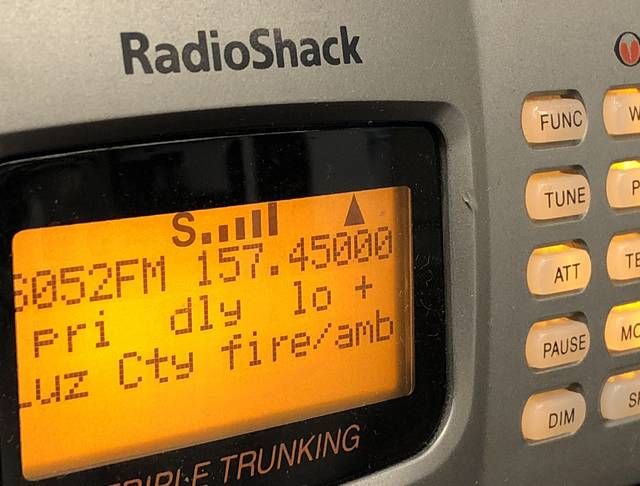Click here to subscribe today or Login.
The ability for the public and media to listen to police scanner activity may come to an end or be drastically altered when Luzerne County implements a new 911 radio upgrade.
County officials plan to switch from a 20-year-old analog system to a digital one because equipment support for the radio transmitters and receivers that allow emergency responders to exchange messages will end Dec. 31, 2020. The system won’t automatically shut down on that date, but replacement parts have become increasingly difficult to find because they are no longer manufactured.
This new digital system will provide the option for each police department to encrypt its radio communication channel so it can’t be heard by outside scanners, said county 911 Executive Director Fred Rosencrans.
Even if departments keep their channels open, outside users would have to buy more expensive digital-capable scanners to hear them, Rosencrans said.
Rosencrans said he won’t force the county’s 49 police departments to encrypt, saying it should be their decision, but that option will be available to all forces.
‘Bad guys’ listen too
Many local police officials expressed interest in encryption when 911 started studying the digital conversion possibility several years ago, citing concerns about suspects tracking their activity and location, which could endanger officers or give suspects a heads up to flee, Rosencrans said.
Debates about encryption have surfaced across the country as more areas go digital, he said.
“A lot of police departments want it for officer safety. Let’s face it, the bad guys listen to scanners as well,” Rosencrans said.
Personal information, such as names and dates of birth, also are broadcast over the air when police run traffic stops, he said. Some online sites rebroadcast scanner frequencies, making the information accessible to listeners anywhere.
“It’s not only an officer safety issue but also a privacy issue that has to be considered,” said Rosencrans.
The county would not encrypt its general 911 law enforcement channel because it is intended to provide general bulletins and information about disasters and other regional emergencies, he said.
Under the current plan, fire department channels won’t be encrypted because they generally don’t broadcast sensitive information, he said.
Rosencrans acknowledged scanner listening is a popular pastime for some area residents, and he does not expect many to invest in digital scanners, which cost hundreds of dollars for basic models without the “bells and whistles.”
“A lot of people just listen to it to hear what’s going on and activity throughout the county,” he said.
Chiefs’ concerns
In Plains Township, Police Chief James O’Malley sees the opportunity for a compromise.
“I would keep day-to-day transmissions open,” O’Malley said. “However, I would encrypt sensitive talk groups, like narcotic busts or undercover operations.”
But O’Malley said he sees no overall reason to keep the media or public from hearing what is going on.
In Hazleton, Police Chief Jerry Speziale said he sees the benefits of encryption, but also acknowledged that he would need more information on funding and technology before making a decision.
“I understand why departments decide to encrypt their transmissions because you do have criminals that listen in,” said Speziale, adding that lack of interference is another benefit.
Already Hazleton takes a “silent dispatch” approach thanks to computer technology in each officer’s vehicle.
“We have tablets that we can respond to calls,” he said. “The county communications center sends us the calls and we can view them right away.”
“We don’t have to say a word,” Speziale added. “We click a button and it sends an alert to the county and the officers on duty that we are responding to a call.”
Speziale also believes that encryption will work for a while, but that someone will eventually be able to crack the technology and listen in.
Project timeline
It’s premature to set a firm date for the digital system to be up and running because the project must still be priced and funded, Rosencrans said.
County council voted in November to hire Pennsylvania-based MCM Consulting Group for $380,357 to handle the first stage of the radio upgrade. The company will help determine the county’s equipment needs, prepare a comprehensive bid seeking interested vendors and identify grants and other possible outside funding.
Rosencrans said letters have been sent to all 175 fire, police and EMS agencies in the county informing them the consultant will be scheduling visits to each site to inventory their current radio equipment and discuss their future needs.
A public request for proposals or bid specifications should be ready for release April 1. Rosencrans wants to analyze all responses by August so council knows what options will cost. New borrowing may be necessary to fund the project, which has been estimated at $20 million.
Council has earmarked $1 million in the capital budget to begin the project.





